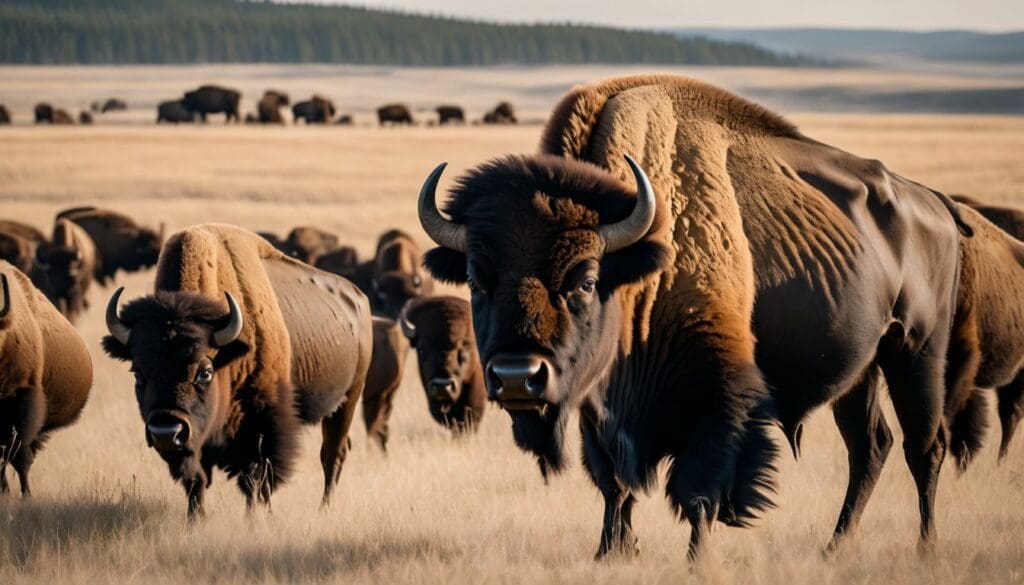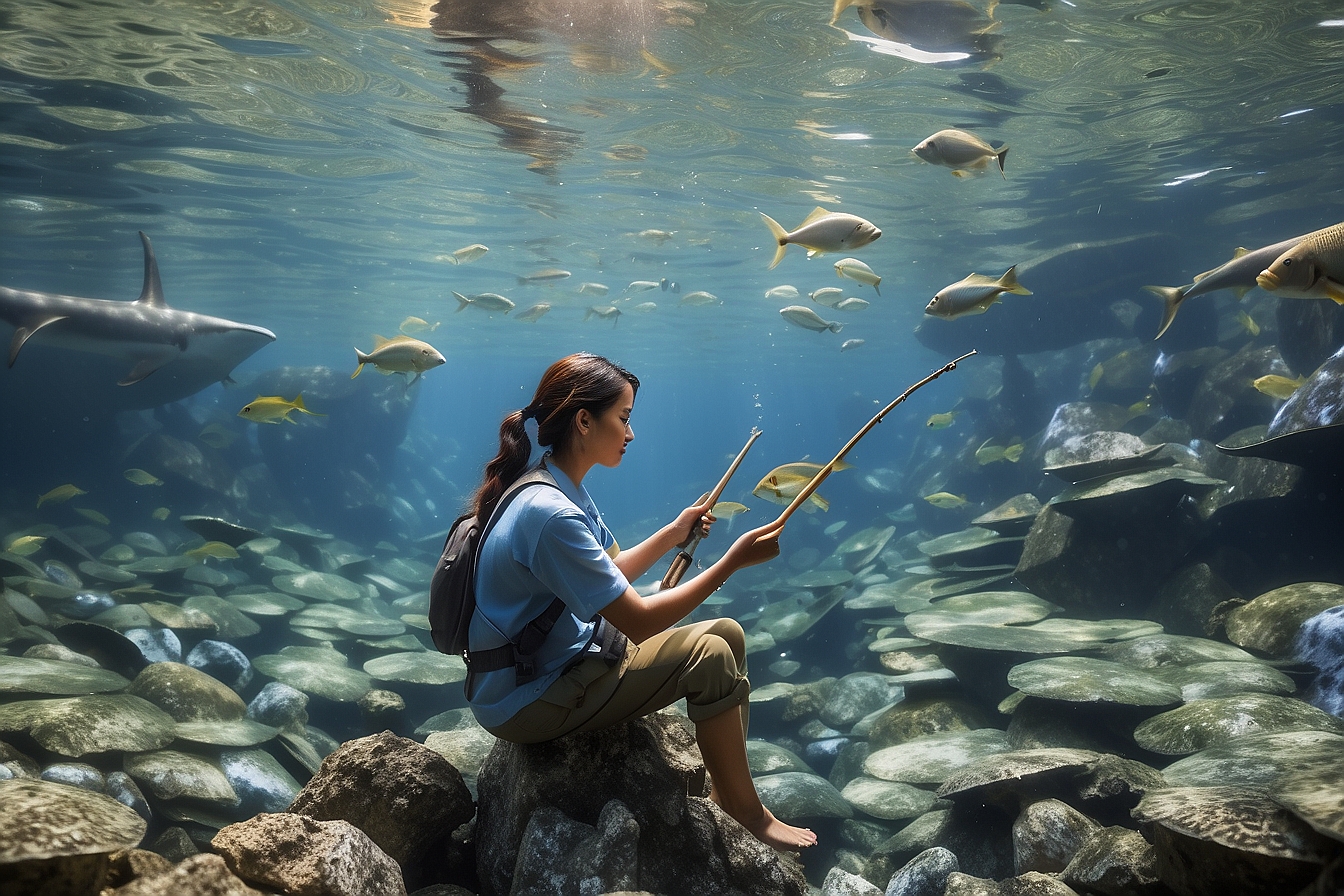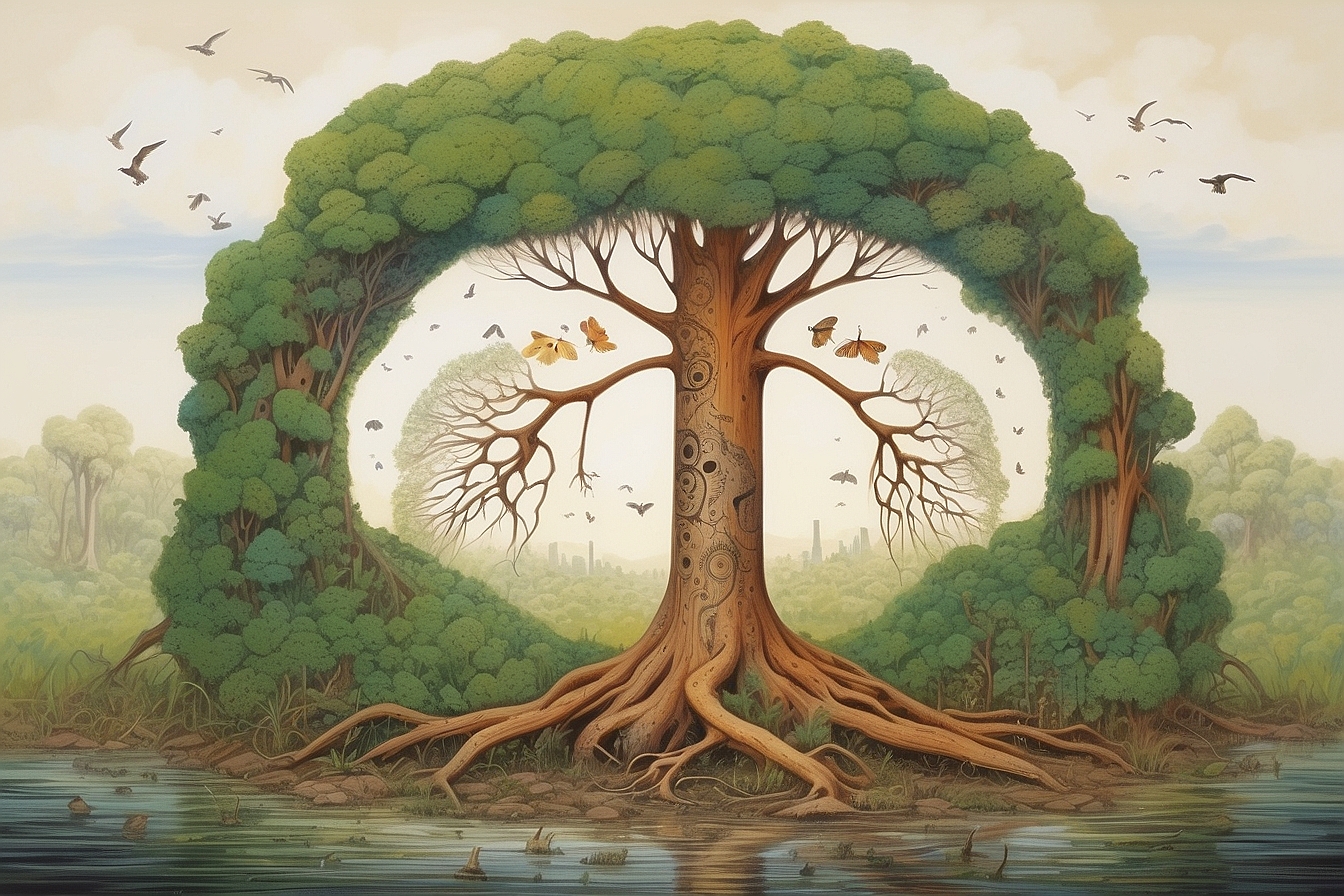We’re all too familiar with the unsettling news of how our precious biodiversity is slipping away, teetering on the edge of catastrophe. If you’re anything like us, this crisis strikes a chord and spurs a yearning to make known that not all is lost—there’s a glimmer of hope on the horizon.
Remarkably, concerted efforts have led to an encouraging 53% average surge in populations for species facing extinction since 1970. Our blog offers an uplifting journey through these inspiring success stories, highlighting where passion and scientific endeavour have snatched numerous creatures from the jaws of near-extinction.
Immerse yourself in narratives brimming with resilience and optimism—a testament to what we can achieve when we commit ourselves to protecting our irreplaceable natural heritage.
Key Takeaways
- Dedicated conservation efforts, such as captive breeding programs and habitat protection, have successfully reversed the decline of numerous species including the California condor and black stilt.
- Increasing local community engagement and implementing strict anti – poaching laws are crucial in boosting populations of endangered animals like mountain gorillas and European bison.
- Species previously on the brink of extinction, such as the peregrine falcon and sea otter, have made remarkable comebacks thanks to bans on harmful chemicals and international protection agreements.
- The recovery of species plays a significant role in maintaining ecological balance; for example, sea otters help preserve kelp forests which are essential to marine biodiversity.
- Continued global cooperation for environmental protection ensures not just species survival but also promotes the health of our entire planet, as seen with ongoing efforts for creatures like the Antarctic Blue Whale.
Notable Conservation Success Stories
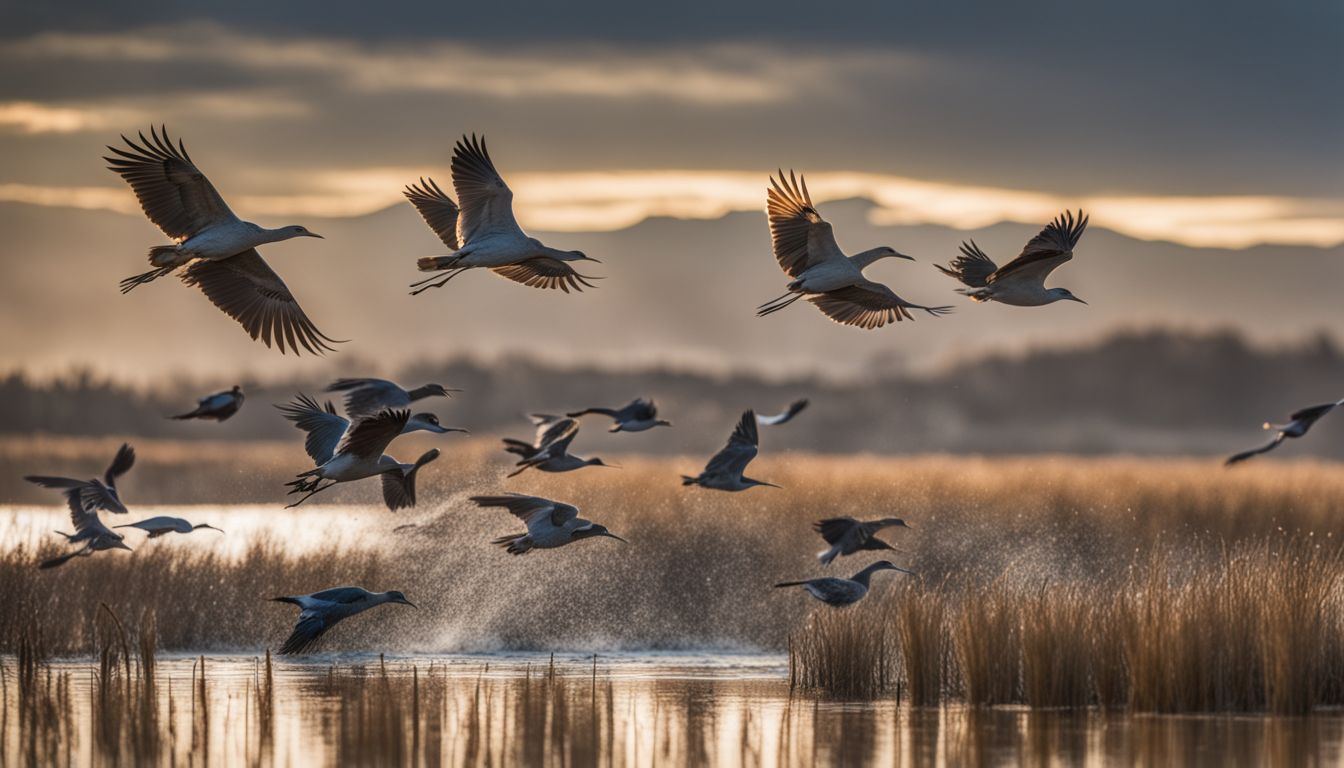
In the face of daunting environmental challenges, concerted efforts have forged paths to redemption for numerous threatened species. We’ll dive into a series of inspiring tales where human intervention has not only halted the descent into oblivion but has also nurtured fragile populations back towards a semblance of their former glory.
California Condor
We’re witnessing a remarkable turnaround for the California condor, once teetering on the brink of extinction. Back in the 1980s, these majestic birds faced dire threats from poaching and lead poisoning.
Their numbers dwindled to just a few dozen individuals. Thanks to dedicated conservationists and an ambitious captive breeding programme, we’ve championed their cause. We’ve successfully nurtured them back from near disappearance.
The focus has been on protecting habitats and eliminating dangers like toxic lead bullets that poison scavenging birds. Our joint efforts have brought about hope where there was little before – today, California condors soar over large swathes of their historical range again.
Engaging local communities and implementing predator control have played vital roles too. These practices ensure that each release into the wild boosts not only numbers but genetic diversity as well – crucial for species survival long-term.
Black Stilt
Our hearts swell with pride as we share the story of the black stilt, a bird that has danced on the brink of extinction. Native to New Zealand, these elegant waders, known in Māori as ‘kakī,’ were once widespread across South Island wetlands.
However, their numbers plummeted due to habitat loss and predation from invasive species like feral cats and stoats. By the 1980s, only a handful remained alive.
In response to this dire situation, conservationists launched an intensive recovery programme. They set up predator-free zones and started captive breeding programmes to boost population numbers.
Thanks to these efforts, today more black stilts grace New Zealand’s riverbeds than at any other time over the past few decades. Their IUCN Red List status still reflects their critical position but also serves as a beacon of hope showing what targeted action can achieve for vulnerable species teetering on extinction’s edge.
Celebrate every small victory; each black stilt now thriving in its natural habitat symbolises our collective commitment to wildlife conservation and nature preservation.
Mountain Gorilla
We’ve witnessed an inspiring turnaround for the mountain gorilla, a species that once faced the direst of futures. Their numbers were plummeting due to habitat loss, poaching, and civil unrest in their home regions of Africa.
Yet through relentless conservation efforts and protective measures, these magnificent creatures have begun to defy the odds. Protective areas were established and anti-poaching patrols intensified, creating a safer environment for them to thrive.
Conservationists diligently monitored health threats while community initiatives improved relations between humans and gorillas. Such collaborative actions have helped curb the decline of this critically endangered species.
Shifting our focus ensures continued progress; we now look towards protecting another marine marvel – the Indus River Dolphin – highlighting how preserving one life on land leads us back into safeguarding life in water.
Indus River Dolphin
The Indus River Dolphin is a shimmering symbol of aquatic resilience. Navigating the murky waters of Pakistan’s river systems, these graceful mammals once teetered on the brink of extinction.
Their decline was fuelled by loss of habitat, pollution, and accidental entanglement in fishing nets. Recognising their perilous state, conservationists sprang into action to ensure their survival.
Collaborative efforts between local communities and international wildlife agencies have resulted in protected areas along the Indus River. Safe havens free from hunters and ecological restoration have played critical roles in their comeback story.
Strides in awareness campaigns educated fishers about sustainable practices that reduce harmful encounters with dolphins. Together, we celebrate each small victory as these rare creatures swim away from the brink towards a more secure future.
Antarctic Blue Whale
Moving from the freshwater triumphs of the Indus River Dolphin, we turn our attention to the vast oceans where the Antarctic Blue Whale has made a remarkable journey back from the edge.
These magnificent marine mammals are not just awe-inspiring in their size but also in their story of recovery. Faced with near extinction due to relentless whaling, these giants of the deep were granted a lifeline when international bans and strong conservation efforts came into effect.
We celebrate every sighting of an Antarctic Blue Whale as a testament to what can be achieved through global cooperation for environmental protection. Their numbers are slowly increasing, signalling hope for species recovery and ecological balance within our planet’s vast blue frontiers.
It’s critical that we continue habitat protection measures and combat climate change, ensuring these gentle behemoths swim freely for generations to come.
European Bison
We’re seeing real progress with the European Bison, whose numbers once dwindled perilously low. A century ago, wild herds vanished completely, pushing these majestic creatures to the brink of extinction.
But through tireless conservation efforts and species reintroduction programs, we have turned their fate around. By releasing captive-bred bison into protected areas of Europe’s woodlands, their population has grown in leaps and bounds.
Our dedication to restoring these icons of European wilderness shows that wildlife recovery is possible with sustained effort. The bison’s comeback serves as a beacon of hope for other endangered species facing similar threats.
Now thriving in Poland, Belarus, and Russia among other countries, European Bison remind us not only of nature’s resilience but also of our own capacity to mend the past’s mistakes through committed ecosystem restoration actions.
Javan Rhinoceros
Our fight to save the Javan rhinoceros has been nothing short of remarkable. These majestic creatures, with their grey wrinkled skin and single horn, once roamed across Southeast Asia in great numbers.
Sadly, poaching for their valuable horns combined with habitat destruction left them teetering on the brink of extinction. But through unyielding conservation efforts, we’re slowly turning the tide.
Strict protection measures and vigilant monitoring in Indonesia’s Ujung Kulon National Park have given these rare rhinos a lifeline.
Conservationists tirelessly track each individual within this critical sanctuary to ensure their safety from poachers. This involves camera traps and foot patrols by dedicated rangers who understand what’s at stake if we lose even one more Javan rhino, scientifically known as Rhinoceros sondaicus.
We’ve also embraced eco-tourism opportunities that support local communities while educating visitors about our ongoing mission to protect biodiversity. As we continue this vital work, let’s shift focus to another success story – the Giant Panda – whose recovery offers hope for endangered species worldwide.
Giant Panda
Building on the momentum of protecting species like the Javan Rhinoceros, we turn our attention to the Giant Panda, a beloved symbol of wildlife conservation. Their black-and-white markings make them one of the most recognisable animals in the world, and their story is a beacon of hope.
Efforts to save these creatures have shown us that with unwavering commitment, even species on the edge can make a remarkable recovery.
We’ve seen this through habitat preservation and anti-poaching laws which have significantly increased their numbers in recent years. Strict bamboo forest protection has ensured these cuddly omnivores continue munching their primary food source safely.
Breeding programmes around the globe have also contributed greatly to stabilising panda populations—reminding us all that dedication and international cooperation are key components in nature conservation.
Hainan Gibbon
We care deeply about every creature facing the threat of extinction, and the Hainan Gibbon is no exception. Once teetering on the edge with a population as low as 10, these rare primates have shown remarkable recovery.
Their numbers now reach over 30 thanks to concerted efforts in habitat conservation and anti-poaching measures.
Our dedication to preserving their forest home has been vital for this comeback. The gibbons live exclusively in China’s tropical forests of Hainan Island, making their survival linked directly to these woods’ health.
By protecting and restoring these crucial habitats, we provide them not just with shelter but a fighting chance for future generations.
Ecosystem Restoration Successes
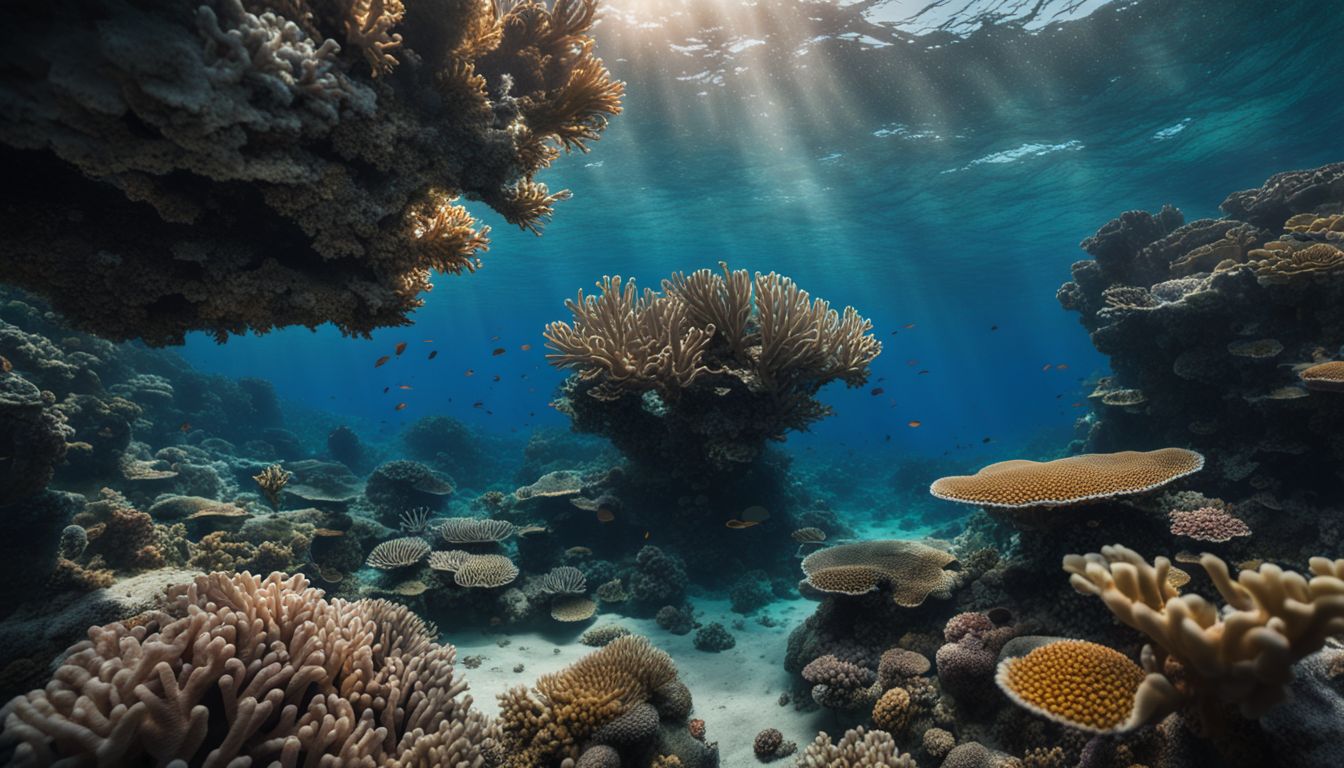
We’ve not only witnessed individual species triumphs but entire ecosystems revived, demonstrating nature’s resilience when given a chance. Our efforts in habitat restoration and protection have reignited the delicate balance of life in diverse landscapes across the globe, from sprawling savannas to vibrant coastal waters.
Saiga
In the vast stretches of Eurasian grasslands, we have witnessed a remarkable turnaround for the saiga antelope. Their distinctive bulbous noses once dotted these landscapes in large herds before they faced severe threats from poaching and habitat loss.
Thanks to concerted efforts by conservationists, their numbers are slowly on the rise again.
We celebrate each milestone in the saiga’s recovery, understanding how critical our actions are in reversing their near disappearance. Strengthening anti-poaching patrols and securing protected areas have been crucial; however, we also address underlying issues such as illegal trade of horns and disease management.
Every step forward reaffirms our commitment to restoring balance within these ecosystems where saigas roam.
Gorillas
We’re witnessing a remarkable turnaround for gorillas in the wild. These majestic primates, once on the brink of extinction due to habitat loss and poaching, are slowly bouncing back thanks to dedicated conservation efforts.
Strong anti-poaching measures and community-based wildlife management have been pivotal. Protected areas where these great apes live are expanding, providing a safer environment for them to thrive.
Educating local communities about gorillas’ importance has encouraged people to protect rather than harm these animals. Eco-tourism also plays a role by showing the economic benefits of keeping gorillas alive and free.
We must continue this positive trend with our support as environmentally conscious individuals who value conservation and environmental sustainability.
Jaguars
Jaguars once prowled the vast rainforests and wetlands of Central and South America without rival. Deforestation and poaching, however, pushed these majestic cats to the brink of vanishing from many habitats where they were once considered lords.
Our collective actions have reversed some of this damage through staunch protection measures, habitat restoration, and anti-poaching laws.
These spotted predators are vital for maintaining the balance within their ecosystems as apex predators. Successful efforts include establishing protected areas, encouraging sustainable land-use practices to reduce human-jaguar conflict, and raising awareness among local communities about the importance of jaguars for biodiversity.
As we continue our work to safeguard jaguars’ future, let’s turn our attention also to another marine creature facing its own set of challenges – the Dugong.
Dugong
Dugongs play a crucial role in coastal ecosystems, grazing on seagrass and helping to maintain healthy marine habitats. These gentle sea cows face numerous threats, including habitat destruction, fishing nets, and illegal hunting for their meat and oil.
Recognising the urgency to protect them, we’ve stepped up conservation efforts significantly.
We collaborate with local communities and international organisations to safeguard the dugong’s remaining populations. Initiatives include establishing marine protected areas where dugongs can feed without disturbance from human activities.
By educating people about the importance of preserving these serene animals, we strive to reduce the dangers they encounter daily. Our actions are fostering an environment where dugongs can thrive once again, securing their place in our ocean’s biodiversity.
Racers
Shifting our focus from the aquatic grace of dugongs, we celebrate another triumph in the form of racers. Specifically, the Antiguan racer has become a symbol of success. Once only found on a single offshore island in Antigua, invasive predators nearly wiped out this slender snake species.
We rallied together and took decisive action to remove threats and restore their habitat. Remarkably, numbers have climbed from a critical low of just 50 individuals to over 1,100 today – an extraordinary feat given their precarious position not too long ago.
Habitat conservation efforts on the islands continue to support these gentle reptiles as they slither towards a more secure future. This narrative stands testament that committed conservation can indeed reverse the dwindling fates of even the most vulnerable species among us.
Bitterns
Bitterns, secretive birds that thrive in reed beds, have faced significant threats due to habitat loss. Efforts to restore wetlands are paying off and these elusive creatures are starting to rebound.
We take pride in supporting initiatives that rebuild their natural environments; it’s crucial for maintaining the delicate balance of our ecosystem.
We’ve seen firsthand how targeted conservation actions can yield positive results for species like bitterns. Through diligent monitoring and careful management of water levels, we’re helping ensure these birds flourish once again.
Their steady recovery offers hope and reinforces our commitment to protecting biodiversity across the globe.
Unforgettable Comebacks from Near Extinction
4. Unforgettable Comebacks from Near Extinction: We’re revelling in the tales of species like the peregrine falcon, which have soared back from the edge of oblivion, showcasing nature’s resilience and the profound impact of dedicated conservation efforts; continue reading to immerse yourself in these extraordinary stories of revival.
Peregrine Falcon
As we marvel at the resilience of nature, let’s take a moment to celebrate the peregrine falcon. These majestic birds once teetered on the brink of extinction due to pesticide use damaging their reproduction.
The bans on harmful chemicals have played a pivotal role in reviving their populations.
We’ve witnessed a remarkable recovery, as these falcons have adapted to urban environments alongside humans. Towering buildings mimic their natural cliffside nesting areas, allowing them to thrive in cities across the globe.
Our efforts in conservation and environmental protection can truly make a difference; the peregrine falcon stands as proof that with determination and action, we can turn back time on species decline.
Mallorcan Midwife Toad
The Mallorcan midwife toad, a native of the mountainous terrain in Mallorca, faced near extinction due to habitat destruction and introduced predators. We take pride in knowing that intensive conservation efforts have made a significant difference for this unique amphibian.
Captive breeding programs played a pivotal role in their recovery by increasing the population numbers.
We reintroduced these toads into their natural habitats with great care, which have now started breeding successfully in the wild. It’s truly heartening to see ecosystems responding positively when we support them.
The survival of the Mallorcan midwife toad stands as testimony to our potential for correcting past mistakes and safeguarding nature’s delicate balance.
Sea Otter
Sea otters play a vital role in maintaining the health of kelp forests, which are crucial to ocean ecosystems. Their remarkable comeback is a testament to concerted conservation efforts that have helped them rebound from the brink of extinction.
Once hunted extensively for their luxurious fur, sea otters faced severe population declines. However, protection under international agreements and careful management have enabled their numbers to grow.
We celebrate their resurgence as it benefits not only the sea otters but also supports biodiversity beneath the waves. These adorable marine mammals are keystone species; without them, kelp forests might perish, affecting countless other marine creatures that depend on this habitat.
Moreover, thriving sea otter populations help control sea urchin numbers, ensuring that these voracious eaters do not decimate important underwater plant life. Our continued support for policies protecting enhydra lutris ensures they swim freely and play their part in nature’s intricate web.
Fen Orchid
The Fen Orchid is a delicate beauty, once teetering on the edge of disappearing from our wetlands. We’ve worked tirelessly to turn its fate around, restoring habitats and safeguarding this tiny plant’s future.
Its pale yellow flowers are a testament to conservation efforts that balance delicate ecosystems.
Our dedication has paid off, with numbers now slowly on the rise in their natural marshy homes. The rebirth of such species reminds us that perseverance and commitment can yield blooming results.
Protecting biodiversity demands continuous action; we take pride in every saved specimen as a victory for nature’s resilience.
Blue Iguana
We’re celebrating a major victory with the Blue Iguana, once on the very edge of extinction. These striking reptiles, native to Grand Cayman, faced dire threats from habitat loss and invasive species.
Their numbers dwindled alarmingly low in the wild; it was clear urgent action was needed.
Our relentless efforts in conservation have paid off for the Blue Iguana. We’ve joined forces with local initiatives to breed these magnificent creatures in captivity before carefully reintroducing them into protected areas.
This meticulous work ensures each iguana has a fighting chance to thrive. With restored habitats and stringent protection measures in place, we watch as their population climbs steadily towards stability.
Gould’s Mouse
Shifting our focus from the Caribbean’s successful revival of the Blue Iguana, let’s marvel at another triumph with Gould’s Mouse. This small rodent, once thought to be extinct for over a century, has made an extraordinary reentry into the world of the living.
Researchers in Australia were thrilled to find that these creatures are still scurrying around, very much alive and well.
Their story is one of resilience and hope; it reminds us that even when we fear a species may be lost forever, nature can surprise us. Conservation efforts across the globe draw inspiration from such discoveries.
They reinforce our dedication to preserving habitats and biodiversity. As we celebrate Gould’s Mouse dodging extinction, our commitment to protecting other endangered species grows stronger.
Together, we work tirelessly towards safeguarding precious life forms against all odds.
Red Kite
We’re celebrating the return of the red kite, a true symbol of successful conservation. Not too long ago, these majestic birds faced extinction across the UK due to persecution and habitat loss.
But concerted efforts by dedicated conservationists turned their fate around. With careful monitoring and reintroduction programs, we’ve witnessed an inspiring resurgence of this striking raptor.
Their graceful flight and distinctive reddish-brown plumage once again grace our skies in growing numbers. Red kites serve as a beacon of hope, showing us that through commitment and collaboration, we can restore nature’s balance and save species teetering on the edge.
Their recovery encourages us to keep fighting for all creatures under threat, ensuring they thrive for generations to come.
Northern Pool Frog
Our efforts to revive the Northern Pool Frog have marked a significant milestone in amphibian conservation. Once widespread in England, this species dwindled to near oblivion by the 1990s, largely because of habitat loss.
Our dedication to restoring their natural fenland habitats enabled these charismatic jumpers to leap back from the edge.
We reintroduced them carefully into protected wetlands where they once thrived. By managing water levels and ensuring an abundance of aquatic vegetation, we provide ideal conditions for their survival and reproduction.
The return of this little frog is not just a win for biodiversity but also helps maintain healthy ecosystems which benefit a multitude of other species too.
American Bison
We’ve witnessed the triumphant return of the American bison, a majestic symbol of the wild that once roamed in massive herds across North America’s prairies. In the late 1800s, these magnificent animals were nearly wiped out, brought to the brink by overhunting and habitat loss.
Their numbers dwindled alarmingly, from millions to just a few hundred individuals.
However, dedicated conservationists refused to let them fade into history. Through protective legislation and sustainable management practices, they started reviving this species’ fortunes.
Bison repopulation efforts included establishing reserves and national parks as safe havens for their recovery. Now we see these icons of resilience thriving again in places like Yellowstone National Park, where they’re an essential part of the ecosystem.
Counting them among our conservation success stories inspires us to continue working towards preserving biodiversity for future generations.
Conclusion
5. Conclusion.
Our efforts in conservation have forged paths for remarkable recoveries across the globe. We see once-dwindling species thrive, restoring balance to our ecosystems. These triumphs inspire us to continue protecting wildlife and their habitats.
Let’s celebrate each victory and keep pushing for a future where all life flourishes. Our planet depends on it—so do we.
FAQs
1. What are some species that have been saved from extinction?
Some notable species that conservation efforts have brought back include the whooping crane, California condor, blue whales, and the Mexican grey wolf.
2. How did the California Condor Recovery Programme help birds like Gymnogyps californianus?
The California Condor Recovery Programme worked to protect habitats, breed condors in captivity, and release them into the wild to increase their numbers.
3. Can large animals like rhinos be brought back from near extinction?
Yes, with dedicated efforts such as protecting their habitat and anti-poaching measures, both the black rhino and southern white rhino populations are on the rise.
4. Have marine species also experienced successful recoveries?
Certainly! The Epinephelus itajara or giant groupers have seen population increases due to conservation measures focused on protecting juvenile habitats.
5. Is there a success story for predator birds as well?
Indeed! Peregrine falcons have made an incredible comeback through breeding programmes and lessening of DDT pesticide use which harmed their reproduction.
6. What role do zoos play in animal conservation like for tigers and wolves?
Zoos contribute by breeding endangered animals such as tigers and Mexican grey wolves in controlled environments before reintroducing them into protected wild areas.

